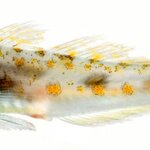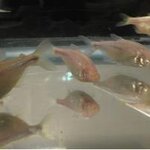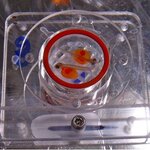Ecology & Zoology

A new small goby fish differs from its relatives not only in its size and colors, but also in the depth of its habitat (70-80 m) in the southern Caribbean. The scientists gave it the name Coryphopterus curasub in recognition of the Curasub submersible that was used in their deep-reef exploration.
Marine biodiversity inhabiting shallow Caribbean coral reefs has been studied for more than 150 years, but much less is known about what lives at depths just below those accessible with conventional SCUBA gear.
Thanks to the availability of a privately owned, manned submersible on the island of…

From the frozen forests of Russia to the scorching sands of the Kalahari Desert, leopards are the most widely distributed large cat on earth. Their iconic spotted coat has been admired and coveted by humans for millennia.
But in one part in their vast range - the Malay Peninsula - leopards are almost entirely black in color.
Yes it turns out those have spots also. By modifying the infrared flash on automatic camera traps and forcing them into ‘night mode’ a team of wildlife experts has revealed the black leopard’s spots. Using infrared flash, the seemingly ‘black’ leopards suddenly showed…

Even a short period of inactivity can be extremely bad for our bones, and for astronauts facing months in zero gravity, the risks are serious.
But there is an animal that has already solved all of the problems faced by immobile humans - black bears who hibernate for six months at a time.
Though it can take several weeks for bears to regain their full metabolic vigor, their bones seem largely unaffected by the lengthy period of inactivity, but how their bodies protect their bones has been a mystery, with previous studies yielding contradictory results. Seth Donahue from Colorado State…

Blind cavefish that have adapted to annual cycles of starvation and binge-eating have mutations in the gene MC4R, the same gene that is mutated in certain obese people with insatiable appetites, according to a new study in PNAS which reveals more about how vertebrates evolved to have different metabolisms from one another and could provide insights into the relationship between human obesity and disease.
As the name suggests, Mexican cavefish live in dark, isolated caves in northeastern Mexico. In the hundreds of thousands of years since they were separated from their surface-dwelling cousins…

Pink salmon that begin life in freshwater with high concentrations of carbon dioxide, which causes acidification, are smaller and may be less likely to survive, according to a new study.
The risks of ocean acidification on marine species have been studied extensively but the impact of freshwater acidification is not well understood. The study is one of the first to examine how rising carbon dioxide levels caused by climate change can impact freshwater fish.
“Most of the work on acidification has been in the ocean, yet 40 percent of all fish are freshwater. We need to think about how carbon…

Too much male sexual attention harms attractive females, according to a new Australian and Canadian study on fruit flies.
Associate Professor Steve Chenoweth from The University of Queensland's School of Biological Sciences said the study showed that male harassment of females hampered the species' ability to adapt to new environmental conditions.
"We found that sexually attractive females were overwhelmed by male suitors," he said.
"Female fruit flies with superior genes that allow them to lay more eggs were so attractive to male suitors they spent most of the time fending off male suitors…

The first species of Yeti Crab from hydrothermal vent systems of the East Scotia Ridge in the Southern Ocean, Antarctica, has been described in a study by Sven Thatje from University of Southampton, and colleagues.
The species of Yeti crab Kiwa tyleri belongs to an enigmatic group of squat lobsters, known as Kiwaidae, that thrive in the hot waters surrounding the geothermally heated hydrothermal vents. It is the dominant species at these sites, occurring at extremely high densities exceeding 700 specimens per square meter.
This Yeti Crab is famous for its body, which is densely covered by…

Many animals – including seals, dolphins and bats – are able to communicate vocally.
However, parrots are among a select few that can spontaneously imitate members of another species.
A study has now pinpointed the region in the brain that may be allowing this to happen – the region that is also involved in controlling movement. The finding could perhaps also explain the fact that parrots, just like humans, can talk and dance.
We know that birds that can sing, including parrots, have distinct centers in their brain supporting vocalizations, called the “cores”. But, exclusively in parrots,…

New research has revealed that parasitic 'vampire' plants that attach onto and derive nutrients from another living plant may benefit the abundance and diversity of surrounding vegetation and animal life.
By altering the densities of the hemiparasite (a parasitic plant that also photosynthesises) Rhinanthus minor, in the Castle Hill National Nature Reserve in Sussex, ecologists from the Universities of York, Sussex and Lincoln were able to assess the impacts of the 'vampire' plants on the biodiversity of a species-rich semi-natural grassland. The scientists compared the plant and…

When a plant is attacked by herbivores, this triggers a number of physiological responses in the plant and calcium ions are important messengers for the processing of wound signals in plant cells. They regulate signal transduction and indirectly control plant defense mechanisms.
Now, scientists have succeeded in visualizing the immediate wound or herbivory responses in plants. They used Arabidopsis thaliana (thale cress) plants that produce a special protein which breaks down after the binding of calcium ions and emits free energy in the form of light. The amount of light corresponds to…